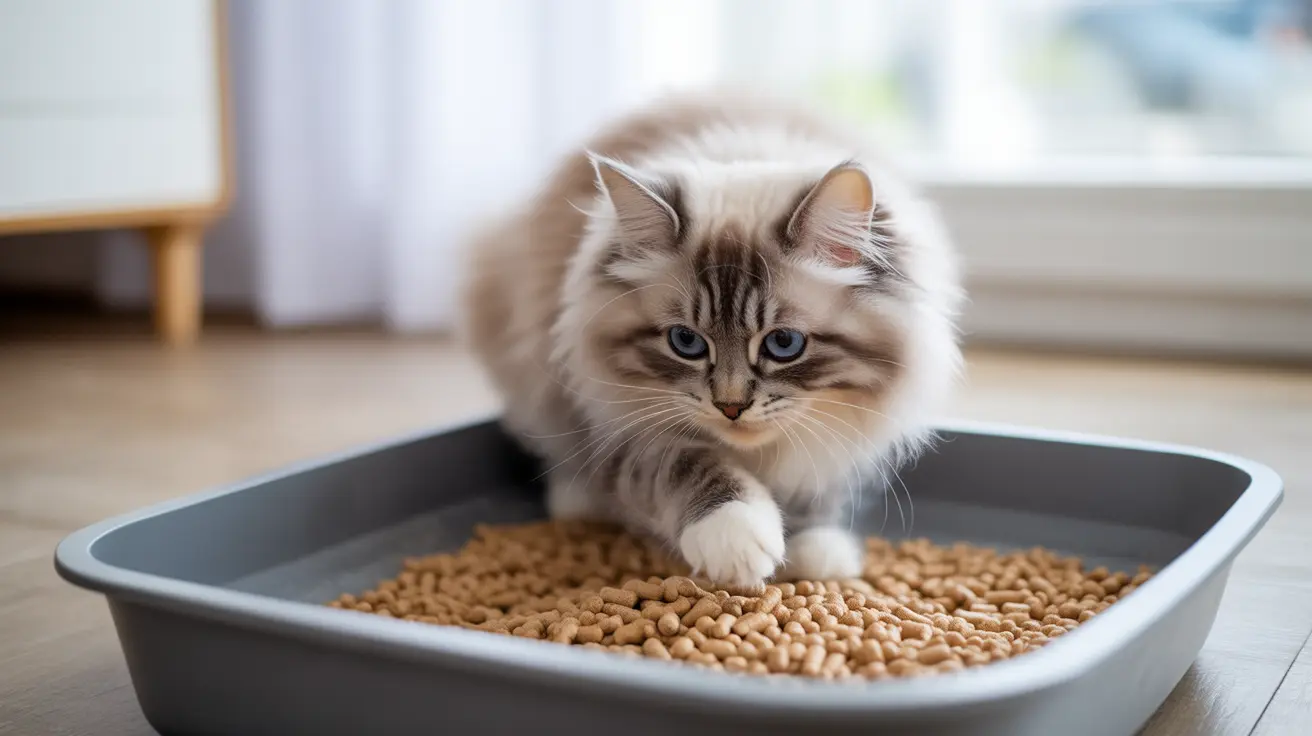Considering making the switch to pine cat litter? This natural alternative to traditional clay litter has gained popularity among eco-conscious pet owners, offering unique benefits and some notable considerations. Whether you're exploring sustainable options or seeking a dust-free solution, understanding the full scope of pine cat litter can help you make an informed decision for your feline friend.
What is Pine Cat Litter?
Pine cat litter consists of compressed pellets or granules made from recycled pine wood sawdust, typically sourced from lumber processing waste. These pellets are designed to break down into sawdust when they come into contact with moisture, effectively absorbing your cat's waste and controlling odors naturally.
The manufacturing process involves kiln-drying the wood to remove potentially harmful oils while preserving the natural antimicrobial properties that make pine an effective litter material. Most varieties are non-clumping, though some brands offer clumping formulations.
Environmental Benefits of Pine Litter
One of the most compelling advantages of pine cat litter is its environmental impact. Unlike clay litter, pine litter is completely biodegradable and can often be composted (for non-edible gardens). The production process typically utilizes wood by-products that would otherwise go to waste, making it a sustainable choice.
Additionally, pine litter is significantly lighter than clay alternatives, resulting in a smaller carbon footprint during transportation and easier handling for pet owners.
Odor Control and Maintenance
Pine cat litter offers natural odor control through its inherent properties. The wood's natural compounds help neutralize ammonia from cat urine, while the fresh pine scent provides a pleasant natural fragrance without artificial additives.
- Daily scooping of solid waste
- Stirring the litter to promote airflow
- Removing saturated sawdust that collects at the bottom
- Complete box changes every 3-4 weeks, depending on usage
Practical Considerations for Pet Owners
- The larger pellet size reduces tracking but may require a transition period for cats
- Some cats may be sensitive to the texture, especially those with declawed paws
- While generally more economical, the lack of clumping ability means different maintenance routines
- A sifting litter box can make separating used sawdust from fresh pellets easier
Health and Safety Benefits
- Minimal dust production, beneficial for respiratory health
- No artificial fragrances or chemicals
- Natural antimicrobial properties
- Lower risk of toxic ingestion compared to clay litters
Tips for Transitioning to Pine Litter
- Mix small amounts of pine litter with current litter
- Gradually increase the proportion of pine litter over 2-3 weeks
- Maintain consistent box locations during the transition
- Consider using multiple boxes with different litters initially
Frequently Asked Questions
What are the main environmental benefits of using pine cat litter compared to traditional clay litter?
Pine cat litter is biodegradable, made from recycled materials, and has a smaller carbon footprint. Unlike clay litter, it doesn't contribute to strip mining and can be composted, making it significantly more environmentally friendly.
How effective is pine cat litter at controlling odors and moisture in the litter box?
Pine litter effectively controls urine odors through natural compounds that neutralize ammonia. It's highly absorbent and transforms into sawdust when wet. However, it may require more frequent maintenance for optimal odor control compared to clumping litters.
What are the common drawbacks of pine cat litter that might affect my cat's comfort or usage?
Common drawbacks include the coarse texture of pellets, which some cats dislike, the lack of clumping ability, and potential resistance to the strong natural pine scent. Some cats may need time to adjust to the different texture and scent.
How can I transition my cat from clay to pine cat litter without causing stress or litter box avoidance?
Gradually mix increasing amounts of pine litter with the current litter over 2-3 weeks. Maintain the old litter box while introducing a new one with pine litter, and never force your cat to use the new litter.
Is pine cat litter safe for kittens and cats with allergies or respiratory issues?
Pine litter is generally safe and often recommended for cats with respiratory issues due to its low dust content. However, kittens should be monitored to ensure they don't ingest the pellets, and cats with specific sensitivities should be introduced gradually with veterinary guidance.






